Fujifilm FinePix HS30EXR Review
Fujifilm FinePix HS30EXR
Fuji's latest 30x superzoom packs plenty of punch for the money.
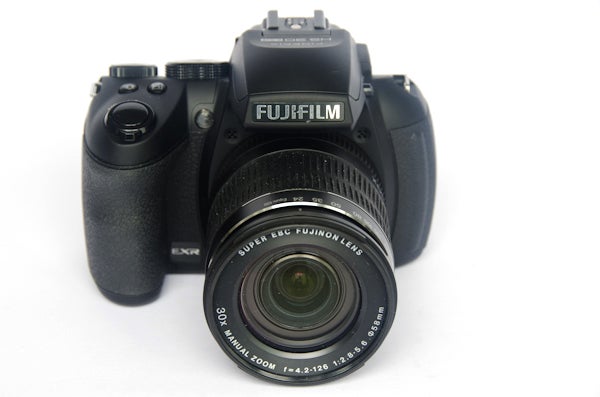
Verdict
Pros
- Manually operated 30x zoom
- Well featured and easy to use
- Flexible EXR modes produce consistent results
- EVF much improved from previous model
- Better battery life than previous model
Cons
- Still a bit sluggish in the performance stakes
- Quite noisy at mid to high ISO settings
Key Specifications
- Review Price: £310.00
- 1/2.3inch 16MP EXR CMOS sensor
- 30x optical zoom (24-720mm in 35mm terms)
- ISO 100 - 3200 (extendable to 12,800)
- 1080/30p Full HD movie recording
- Tiltable 3in, 460k-dot LCD monitor
- 920k-dot electronic viewfinder
The Fujifilm HS30 EXR superzoom updates last year’s HS20 model bringing with it a small number of fairly substantial upgrades. Chief among these is a new 16MP EXR sensor that is claimed to deliver 30% less noise at higher ISO settings, a much-improved electronic viewfinder (EVF) that boosts resolution from 260k-dots to a much more usable 920k-dots. In addition, the HS30 also ditches the 4xAA batteries required by its predecessor in favour of a more efficient Li-ion battery that’s good for a claimed 600 shots. Last but not least, the HS30 also gets a new electronic level, which is a big help when trying to keep your horizons straight.
In most other respects, however, the HS30 is largely identical to the HS20. As such its highlights include a manually controlled 30x optical zoom; the ability to record lossless Raw image files as well as fine or standard quality JPEGs; a generous range of exposure modes including the full quartet of PASM controls and Fuji’s proprietary EXR shooting modes; a one-touch panoramic capture mode; 1080/30p Full HD video recording; a number of high-speed video capture modes that play back in slow-motion; a tiltable 460k-dot rear LCD monitor, and of course the same DSLR-like styling and handling characteristics of its predecessors.
At its heart the HS30 uses a backside-illuminated 1/2.3in CMOS EXR sensor that Fuji claim has been “improved” from what was found inside the HS20, which works in tandem with a dual-core Fuji EXR image processor. The EXR sensor is unique to Fuji and uses a triple-layer pixel array that allows neighbouring pixels to be combined when required to increase the signal-to-noise capacity of the sensor – a major factor when it comes to controlling noise in low light. In addition to this, the EXR sensor can also be augmented for dynamic range or for resolution. There is a price to pay, however, in that optimisation of the EXR sensor for either low-light or dynamic range halves its effective resolution from 16MP to 8MP.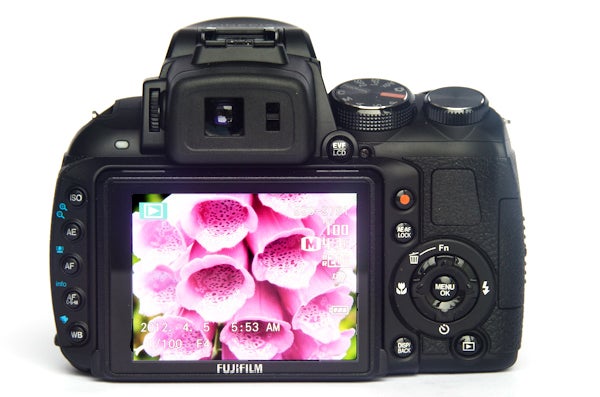
Maximum output at 16MP in the default 4:3 aspect is 4608 x 3456 pixels, although if you’re short of memory card space or just feel that you just don’t need the full 16MP then there are also options to record at 8MP and 4MP. Alternative aspect and resolution options include 3:2 up to a maximum 14MP, and 16:9 up to a maximum of 12MP. In addition to Fine and Normal JPEG quality settings the HS30 can also be set to record Raw image files in Fuji’s proprietary .RAF format, or even simultaneous Raw and JPEG. Unfortunately though, the option to shoot Raw lies somewhat buried within the main in-camera menu, so if you regularly switch between JPEG and Raw you may well want to assign this to the Fn button.
Of course, the biggest single selling point of any superzoom camera is the convenience of having such a wide focal range to hand in a single lens, and in this respect the HS30’s 30x optical zoom is up there with the best of them. Offering the 35mm focal range equivalent of 24-720mm the HS30 is bettered only by Nikon’s 42x P510 and Canon’s 35x SX40.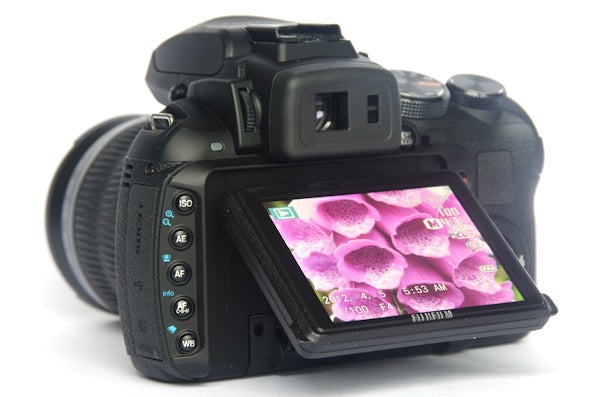
Unlike these two models, and indeed just about every other superzoom on the market, the HS30’s zoom is controlled manually by rotating the lens barrel, just as you would with a regular DSLR. This gives the HS30 a big advantage over its competitors, simply because it’s much quicker and far more intuitive to operate than the fiddly, spring-loaded power-zoom controls employed by its rivals. In addition, it’s also much easier to achieve precise framing of your subject with a manual zoom ring as powered-zooms tend to move in incremental steps, meaning you often need to lightly feather the zoom control back and forth (and sometimes even physically move) to frame your shot exactly as you want it.
The lens itself is a Fuji-made Fujinon optic that offers a maximum aperture of f/2.8 at 24mm, rising progressively to f/5.6 at around 350mm and beyond. The lens incorporates 15 elements in 11 groups and includes three aspherical one ED lenses to minimise purple fringing on high-contrast borders. In addition, all of the elements have been treated with Super EBC (Electron Beam Coating) in an effort to further reduce image flare and ghosting. 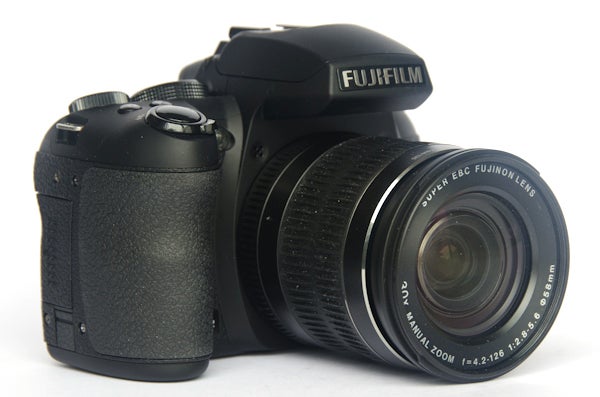
Given its telephoto reach it’s reassuring to know that the HS30 offers built-in sensor-shift image stabilization that can be set to counter both handshake and also more general motion (for example when shooting from moving vehicle). Furthermore, if 720mm doesn’t provide quite enough telephoto reach for you then the HS30 also offers 1.4x and 2x ‘intelligent’ digital zoom options that essentially take a crop from the central area of the sensor and enlarge it. While the 1.4x digital zoom produces generally acceptable results, the 2x option is much more hit and miss with resolution issues and processing artifacts fairly evident even when the results are viewed at smaller sizes.
Used in the regular focus mode, minimum focus distance at 24mm is 45cm, rising to about 2m at 720mm. That said, the HS30 also offers some excellent Macro capabilities with regular Macro mode taking minimum focus distance down to 4cm when the lens is set to 24mm. Even more impressive is the Super Macro setting, which slashes minimum focus distance to just 1cm – again with the lens set to 24mm. Macro results are very good indeed and even outshine the camera’s telephoto capabilities. If you’re a particular fan of shooting small things up close then the HS30 comes highly recommended.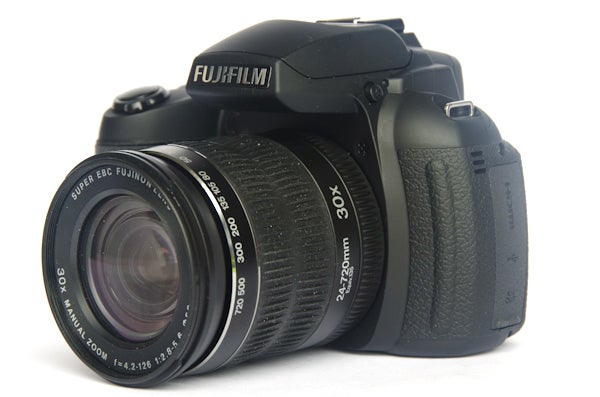
Shooting modes extend to the regular Program, Aperture-priority, Shutter-priority and Manual (PASM) quartet found on DSLRs. These are complimented by the three EXR specific modes – Resolution Priority, High ISO & Low Noise, and D-Range Priority. Of course, if you’re not sure which EXR mode you should be using then there’s also an Automatic EXR setting that lets the camera decide on your behalf.
Complimenting the EXR modes are four ‘Advanced’ exposure modes: Pro-Focus and Pro Low-Light both take and then blend multiple exposures to achieve their results and are further complimented by a Multiple-Exposure mode and a newly introduced 3D mode for which you’ll need a 3D compatible viewer. Rounding things off are a fully Automatic setting, 17 individually selectable Scene modes, a one-touch Panorama mode and, last but not least, a Custom setting. 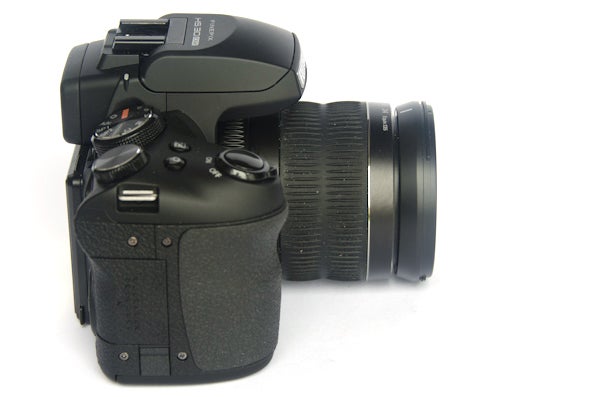
Movie modes include the facility to record 1080 Full HD movies at 30fps, backed up by 720 HD at 30fps and VGA quality movies also at 30fps. Sound is recorded in stereo, but there’s no microphone input. In addition to regular movies the HS30 also offers a range of high-speed recording options including 640 x 480 at 80fps and 320 x 240 at 160fps. All of these high-speed options play back in slow motion.
The HS30 follows the same design blueprint of its predecessors with the overall size and shape of the camera not dissimilar to that of a small, entry-level DSLR. Overall build quality, while not quite up to the same benchmark standard of Fuji’s flagship X-S1 superzoom, is still very high with the HS30 encased within a tough plastic outer shell that feels strong enough to survive the odd knock or two.
The handgrip, while still relatively deep, feels slightly thinner than it did on the HS20 – no doubt on account if it not having to accommodate four AA-sized batteries anymore. Able to accommodate between two to three fingers (depending on the size of your hands, of course), the ergonomic shape and rubberised finish allows you to get a good, secure hold of the camera. This is further aided by a ridge on the back of the camera that is perfectly placed to brace your thumb against. Together these make the HS30 a very comfortable camera to hold overall. 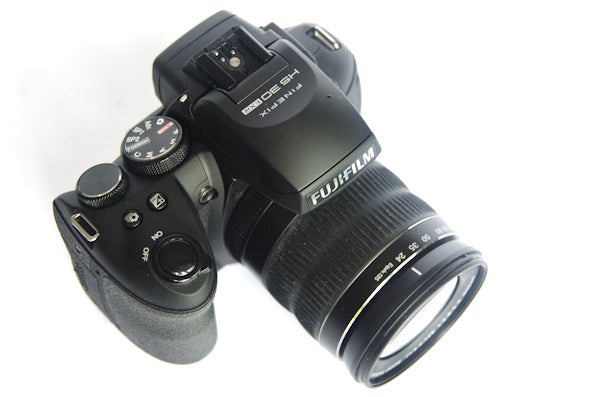
The zoom ring is covered in small ridges making it especially easy to get a good firm hold of. The manual focus ring, however, is a little too close to the camera body for our liking. Given how far forward the EVF/pop-up flash housing extends, getting a good hold on this ring can be a little fiddly. That said we do like how the camera displays a focus bar indicator on the rear monitor/EVF when the camera is being used in manual focus mode.
The HS30 is well adorned with a good selection of buttons that enable you to quickly select and chance regularly used settings such as ISO, White Balance and AF mode. The command wheel to the right of the main mode wheel is a nice touch too and well placed within easy reach of the thumb. We also like the inclusion of an AE/AF Lock button as this can really help out in tricky metering situations. While the HS30 would undoubtedly benefit from some sort of quick menu, the omission of one is just about forgivable given the sheer number of direct-access buttons it offers.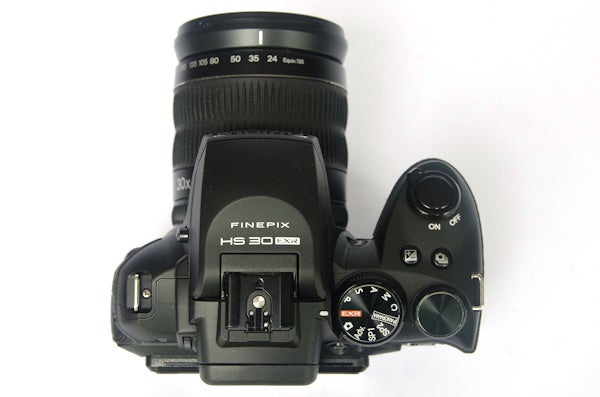
The in-camera menu is relatively simple to navigate, although as we mentioned earlier in the review the option to shoot Raw is rather oddly tucked away at the bottom of the Set-up menu rather than prominently displayed near the top of the Shooting menu as you might expect. In all other respects though, the menus and sub-menus are all well laid out, making it easy to find and adjust the camera’s various settings.
The new 920k-dot EVF is a huge improvement on the old 230k-dot EVF of the HS20. Whereas the older model offered a particularly unsatisfying user experience on account of its low resolution and washed out colour, the new viewfinder is much sharper and with much better colour rendition too. It’s still no match for an optical viewfinder and falls some way behind the current crop of 2.4m-dot Sony viewfinders, but as an alternative to the 3in, 460k-dot rear monitor it’s perfectly useable. Should you want to use the rear svcreen to compose with then the ability to tilt the screen upwards by just over 90 degrees and downwards by around 45 degrees is particularly useful for overhead or waistline shooting.
In our review of the HS20 last year we were somewhat critical of that model’s slow start-up time, perceptible autofocus delay and lengthy image processing wait times. We certainly weren’t alone in these criticisms either. In response Fuji has claimed that the HS30 offers notable performance upgrades over its predecessor. While we didn’t have an HS20 to hand during our test to make any direct comparisons against, we have to say that the HS30 remains a bit on the slow side. 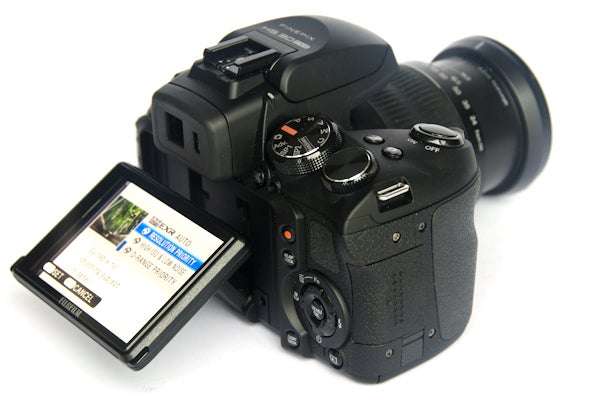
Start-Up is one area where performance has improved though. With the Quick Start option set to ‘on’ the camera takes approximately two seconds to switch on and lock focus, which isn’t bad at all – certainly a big improvement over the 3.5seconds of its predecessor.
Autofocus speed feels much the same, although the slight delay between the act of half-pressing the shutter button and the AF system actually kicking into gear still seems to be a bit of an issue. Once the AF system is up and running it’s fast enough and in general you’re looking at less than a total of 0.5secs for the AF system to lock on, however the slight delay at the start of proceedings does make the HS30 feel slower than its main rivals.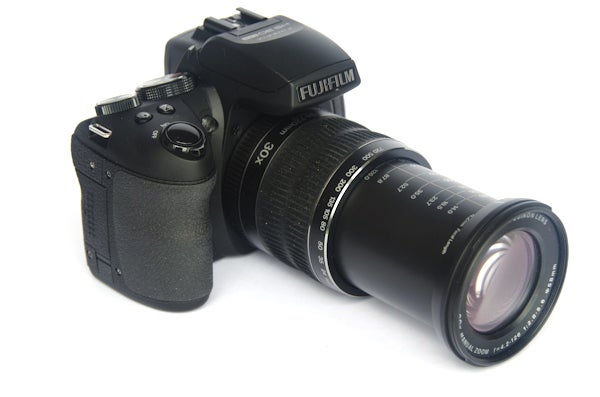
Processing times remain one of the bigger chinks in the HS30’s armour though. The times taken to process images will, of course, vary depending on the complexity of the scene you are photographing and the quality level and drive mode you have the camera set to. By way of an example, shooting full-resolution fine-quality JPEGs on Single-shot drive mode, each image takes around 2.5 seconds for the camera to fully process – we only managed to shoot four images within a timed ten-second period, getting exactly the same result when we switched over to shooting Raw.
While the HS30 offers a good range of Continuous shooting options (including a Best Shot Selector and some useful bracketing options) the memory buffer does fill up quite quickly, after which the camera will slow down considerably. For example, shooting 16MP JPEGs with the 8fps Continuous option we were only able to record six consecutive frames before the camera slowed to approximately 0.6fps. By reducing resolution to 4MP we were able to reel off 12 consecutive shots before the camera slowed. This isn’t particularly terrible performance overall, although it’s worth bearing in mind if you were hoping to use the HS30 to regularly shoot fast-moving action with. 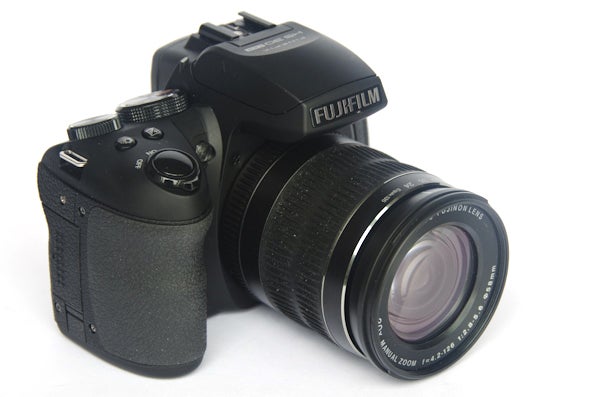
Used on the lowest ISO settings, image quality isn’t at all bad. First and foremost, it’s important to bear in mind that while the HS30 might resemble a small DSLR it has much more in common with compact cameras and, as such, uses a sensor that is much smaller then the APS-C sensors found in the vast majority of entry-level to mid-range DSLRs. In this sense, it’s important to judge the HS30 on its merits as a compact camera and to be realistic about what it’s capable of producing in terms of overall image quality.
That said, if you’re primarily looking for a well-featured camera to take non-critical snapshots with then the HS30 is more than capable, and certainly able to hold its own against other superzooms currently on the market. The EXR modes in particular are capable of producing consistently vibrant images with good levels of contrast. By the same token though the regular Automatic mode often disappoints with flat, lifeless looking shots. Images taken in the PASM exposure modes can also come out a little flat – at least compared to their EXR counterparts.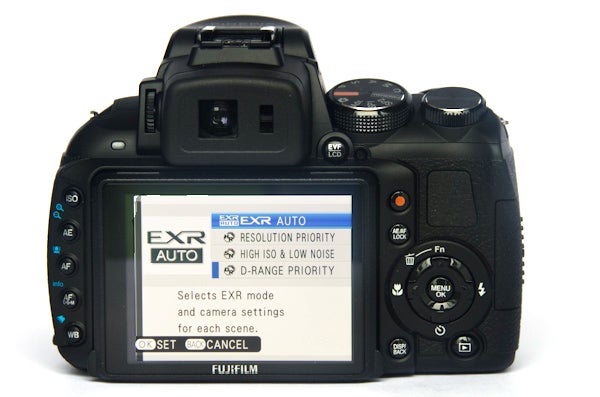
Unlike many modern digital cameras the HS30 doesn’t offer any built-in digital filter effects, although there is quite a bit of scope to ‘shape’ the in-camera image processing as you like. In addition to selecting basic Colour, Tone and Sharpness levels the HS30 also offers number of Film Simulation options that essentially mimic the look of classic old 35mm film stock from Fuji. We tended to use the Provia (Standard) setting, but if you want to boost saturation then the Velvia (Vivid) setting can come in handy.
The Fujinon lens produces good levels of sharpness when used to shoot subjects in close proximity, especially at wideangle settings, although faraway objects tend to come out much softer – even at wideangle settings. Likewise, extending the zoom to its furthest telephoto reaches tends to result in images that lack sharpness. This is a common problem with all-distances-covered zoom lenses mind, and certainly isn’t unique to the HS30. The sensor is on a par with other mid-range compacts at resolving fine detail at lower ISO settings although some JPEG processing artifacts can be seen even at the lowest sensitivity settings. At mid to high ISO settings (and despite Fuji’s claims to the contrary) noise really does become quite intrusive, leading to images where fine detail takes on a ‘smeared’ or ‘painted-on’ look by the in-camera noise reduction.
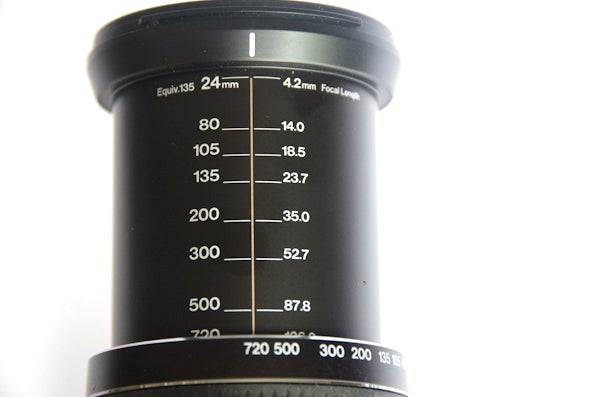
Verdict
Given that the HS20 can still be purchased for around £260 whereas the HS30 can be found for as low as £310 online, do the various incremental upgrades make the HS30 worth the extra £50? We think that they do. The HS30’s new EVF is infinitely more usable than its predecessor’s, and battery life is better too. Judged against other compact cameras using small 1/2.3inch sensors image quality is pretty good and the EXR modes remain useful in a variety of challenging situations. Add to this the HS30’s manually operated zoom, generous feature set and general ease of use and there’s plenty here to tempt you. If you’re looking specifically for a superzoom then the HS30 is certainly worth a closer look.

ISO 100 produces good detail in shadow areas.

By ISO 200 it’s possible to spot some minor effects of noise-reduction, although you have to look hard.

By ISO 400 noise has begin to creep into the image.

As with so many other compacts using 1/2.3in sensors ISO 800 is the cut-off point in terms of quality.

ISO 1600 is fairly noisy and it’s possible to see this in images, even at reduced sizes.

The top standard sensitivity setting of ISO 3200 shows a loss of saturation as well as noise.

Image quality takes a bit of a nosedive at the first extended setting of ISO 6400. Maximum resolution is pegged at 8MP too.

The top extended setting of ISO 12,800 is only achievable at 4MP and image quality is pretty terrible.

Shooting in Aperture-priority at ISO 400 has resulted in a slightly soft image overall with fine detail taking on a ‘smeared’ look.
(1/125sec @ f/8, ISO 400, 105mm, AWB)

The HS20 is best able to resolve fine detail at its lowest settings of ISO 100 and ISO 200.
(1/125sec @ f/6.4, ISO 200, 75mm, AWB)

Switching to the ‘Velvia’ Film Simulation setting produces images with more saturation and contrast. And just like the old 35mm film stock its based on greens come out especially rich.
(1/250sec @ f/4, ISO 100, 70mm, AWB)

Metering is generally pretty accurate, but like its predecessor the HS30 has the occasional tendency to overexpose.
(1/160sec @ f/5.6, ISO 200, 24mm, AWB)

While the 24-720mm range of the 30x zoom might grabs all the headlines, it’s the HS30’s two Macro modes that really impress.
(1/100sec@ f4, ISO 100, 24mm, AWB, Macro)

Straight out of camera and the HS30 has faithfully captured this sunset over the sea.
(1/30sec @ f/8, ISO 200, 135mm, AWB)
Trusted Score
Score in detail
-
Value 9
-
Design & Features 8
-
Image Quality 8
-
Build Quality 8

